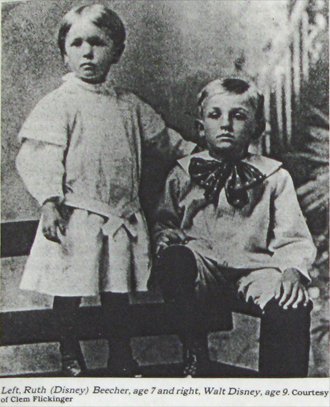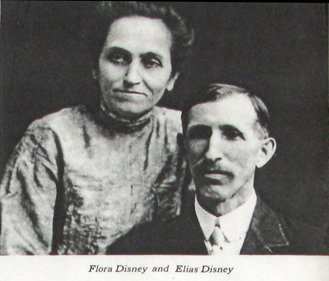
|
The Marceline Walt Disney Knew | ||
|
|
|||
|
Four-year-old Walt Disney arrived by train in Marceline, Missouri from Chicago in April 1906. Then, four years later, his family moved to Kansas City. Despite his relatively short time in Marceline, Walt Disney thought of Marceline as his hometown. I arrived by car in Marceline from suburban Chicago in April 2010. Then, 48 hours later, I continued on to Kansas City. Despite my short time in Marceline, I’ll post several articles about the town over the next few months. For my first article in this series, I thought it would be best to have a guest columnist—someone with real insight into Walt Disney’s Marceline years. Nobody would be better qualified than Walt Disney himself, right? Needless to say, he didn’t write this article for Yesterland. He wrote it for the Marceline News, which published his memories on September 2, 1938, on the occasion of the 50th anniversary of the founding of Marceline.
|
|||
|
|
|||
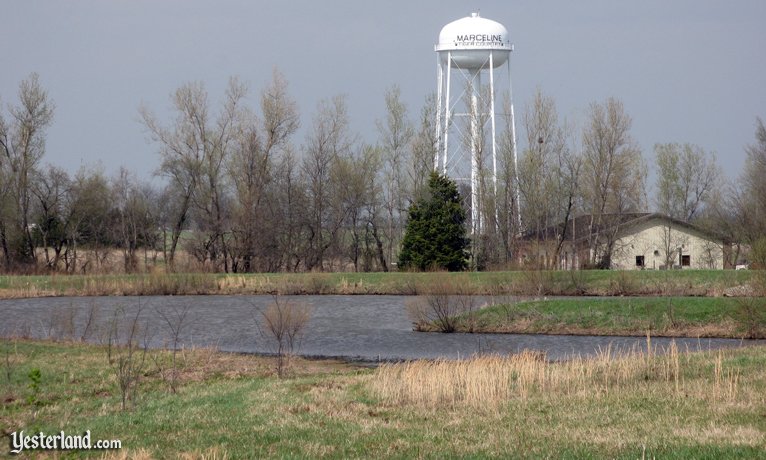 The pond on the Disney family farm, 104 years after the Disney family moved there |
|||
|
THE MARCELINE I KNEW I was extremely glad to receive your letter asking me to write some impressions of Marceline as I remember it from my childhood days. To tell the truth more things of importance happened to me in Marceline than have happened since—or are likely to in the future. Things I mean, like seeing my first circus parade, attending my first school, seeing my first motion picture. I know you’ll agree with me that such childhood “firsts” as those are of utmost importance in any human being’s life.
I went with my family to live in Marceline when I was five years old and I stayed there until I was nine. I clearly remember the day we arrived there on the train. A Mr. Coffman met us in his wagon and we rode out to our house in the country just outside the city limits. I believe it was called the Crane Farm. My first impression of it was that it had a beautiful front yard with lots of weeping willow trees. The Taylors lived on one side of us and Doc Sherwood on the other. One of my fondest childhood memories is of Doc Sherwood. He used to encourage me in my drawing and gave me little presents for my efforts. One time I think he must have held a horse of his nearly all day so that I could draw it. Needless to say, the drawing wasn’t so hot, but Doc made me think it was tops. My brother Roy reminds me of another flyer I took in the line of art at that time. I painted one side of our house with pitch. The outcome must have been slightly frightening to say the least and I wasn’t thanked for my efforts by the family.
I can remember the big red brick school house as if it were yesterday. Maybe if I saw it today it wouldn’t look so immense but it did to my young eyes. My first teacher’s name was Miss Brown. And what fun I used to have on winter days going down the hillsides lickety-split on a sled. Everything connected with Marceline was a thrill to us, coming as we did from Chicago. The cows, pigs, chickens gave me a big thrill, and perhaps that’s the reason we use so many barnyard animals in the Mickey Mouse and Silly Symphony pictures today — who knows. You know what the psychologists say about the importance of childhood impressions. An especial event in connection with my life in Marceline was the day I got to go down in the old No. 1 coal mine which was just a short distance from our place. Before we left Marceline, we moved from the farm into town for awhile where we lived between the Wheelers and the Moormans. Mr. Moorman was the high school principal and Mrs. Moorman, I must confess, was my first “dream girl”. Of course, I was all of eight or nine at the time, but I can remember what pretty red hair she had. Other random remembrances include the fact that one of the prides of my life was my uncle Mike Martin, who was an engineer on a train running from Marceline to Ft. Madison, Iowa. After all if you can’t be an engineer yourself, the next best thing is to have a relative who is one. I’m glad I’m a small town boy and I’m glad Marceline was my town. Thanks a lot for letting me write my impressions, and say hello to all the folks. In addition, here is wishing you all congratulations and success in connection with your Golden Jubilee. Best regards, /s/ Walt Disney Reprinted from the Marceline News September 2, 1938 |
|||
|
Think of the settings of Disney movies such as So Dear to My Heart and Lady and the Tramp. Main Street, U.S.A. at Disneyland represents the same period of time as Walt’s Marceline years. Even the ride concept that eventually became the Matterhorn began with the simple idea of allowing guests to sled down a snowy hill. The rest of this article consists of photographs of some Marceline locations from the early twentieth century that are still there—more than a hundred years later. |
|||
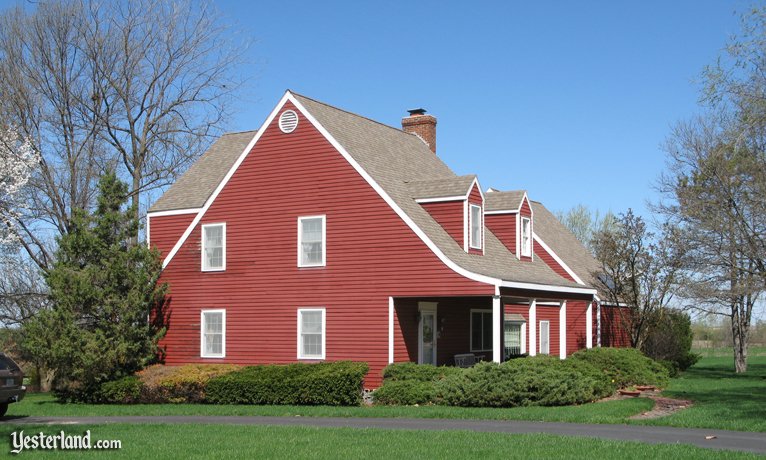 The Disney family house in 2010 |
|||
|
Although it now looks nothing like the basic, white Disney family farmhouse from 1906, the house is still there, in its original location on the farm property. It’s a private residence. |
|||
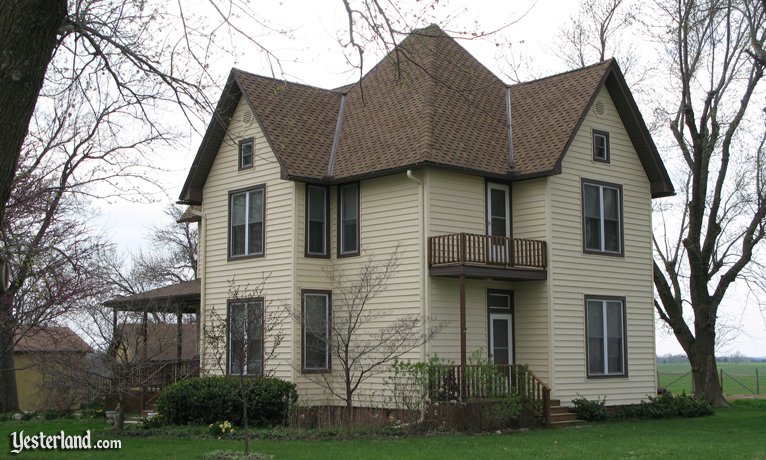 The Taylor house in 2010 |
|||
|
In his letter, Walt Disney wrote, “The Taylors lived on one side of us and Doc Sherwood on the other.” Erastus Taylor, known as “Grandpa Taylor,” was in his 90s. He told Civil War stories to young Walt. According to Anthony Lane in The New Yorker, Walt later said, “I don’t think he ever was in a battle in the Civil War, but he was in all of them.” The Taylor house is still owned and occupied by the Taylor family. It’s recognized as a Missouri Century Farm, which means the farm has been in the same family for 100 years or more. There are several other Missouri Century Farms on the same road. |
|||
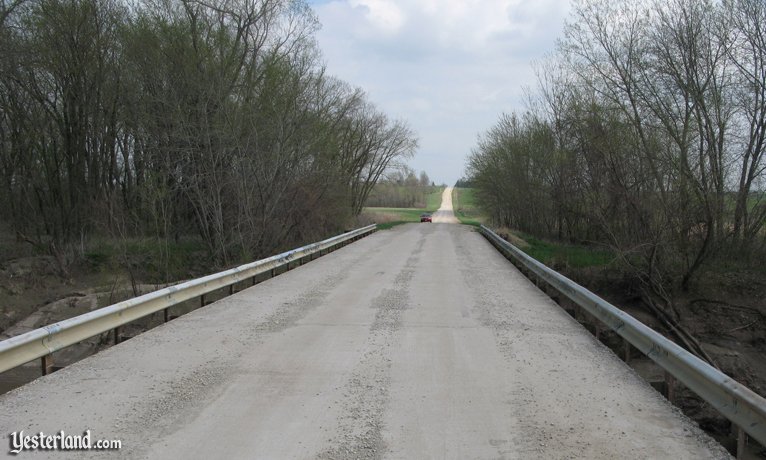 The bridge over Yellow Creek in 2010 |
|||
|
Young Walt would go fishing with his friends for catfish and bowheads off the old Yellow Creek bridge. It’s not the same bridge any more, but Yellow Creek probably looks much as it did a century ago. The gently rolling farmland in this area is beautiful. |
|||
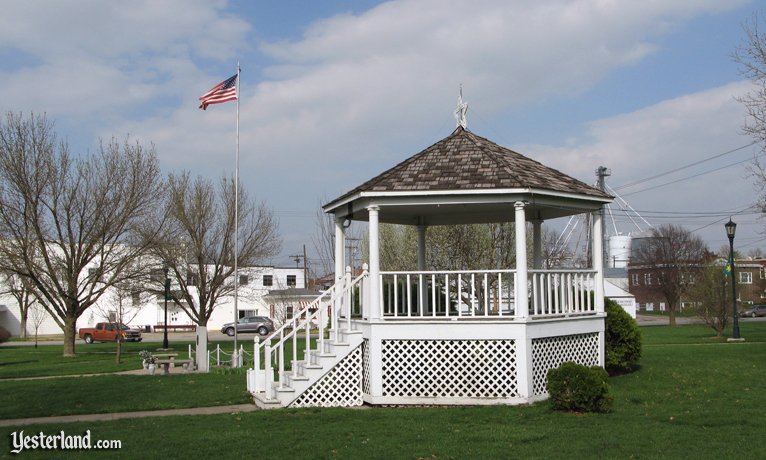 The E. P. Ripley Park gazebo in 2010 |
|||
|
The gazebo in E.P. Ripley Park served as the stage for outdoor band concerts. If the name E. P. Ripley sounds familiar to you, it might be because it’s also the name of a locomotive on the Disneyland Railroad—originally the Santa Fe & Disneyland Railroad. Edward Payson Ripley (1845-1920), known E. P. Ripley, became president of the Atchison, Topeka and Santa Fe Railway in 1895 and held that position for over 25 years. The town of Marceline owes its existence to the Santa Fe. In the era of steam locomotives, the railroad company established Marceline in 1888 to serve as one of one of two ”division points” on their new mainline track between Chicago and Kansas City. The Santa Fe Railway donated E.P. Ripley Park to Marceline in 1898. |
|||
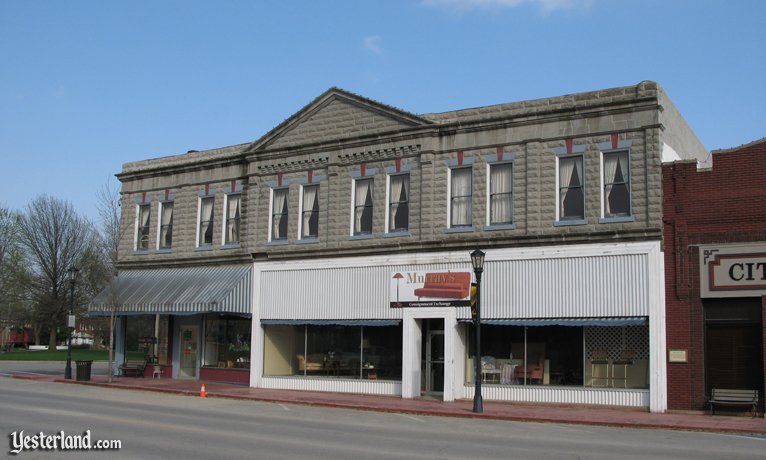 The Allen Hotel building in 2010 |
|||
|
Built in 1906, the building was home to the Allen Hotel upstairs and Murray’s Department Store downstairs. The hotel ceased operations long ago. Amazingly, Murray’s still operates in the building, although it’s now a consignment store with limited hours, not a department store. On April 5, 2010, long-time Marceline resident Vicki Lodder opened Ma Vic’s Corner Café. (Her granddaughter calls her Ma Vic.) |
|||
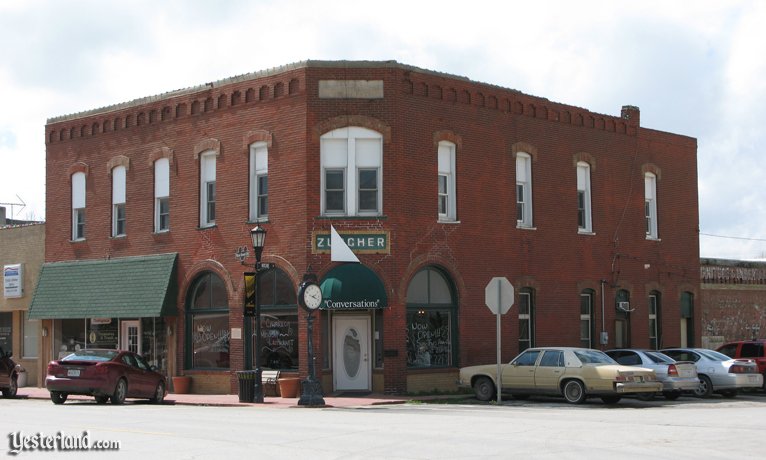 The Zurcher building in 2010 |
|||
|
The Zurcher building is across the street from the Allen Hotel building. The first story was built in 1892; the second floor was added in 1903. Zurcher’s Jewelers operated from 1903 until 1973. On April 5, 2010—the same day that Ma Vic’s opened—a family from Columbia, Missouri opened El Cimarron Mexican Restaurant on the ground floor. Although Marceline has changed considerably since Walt Disney lived there, there’s still much that he would recognize. |
|||
|
|
|||
|
You might be interested in this related article at Yesterland:
© 2010-2017 Werner Weiss — Disclaimers, Copyright, and Trademarks Updated February 17, 2017.
Historic Disney family photographs: Marceline News, September 2, 1938. |
|||
